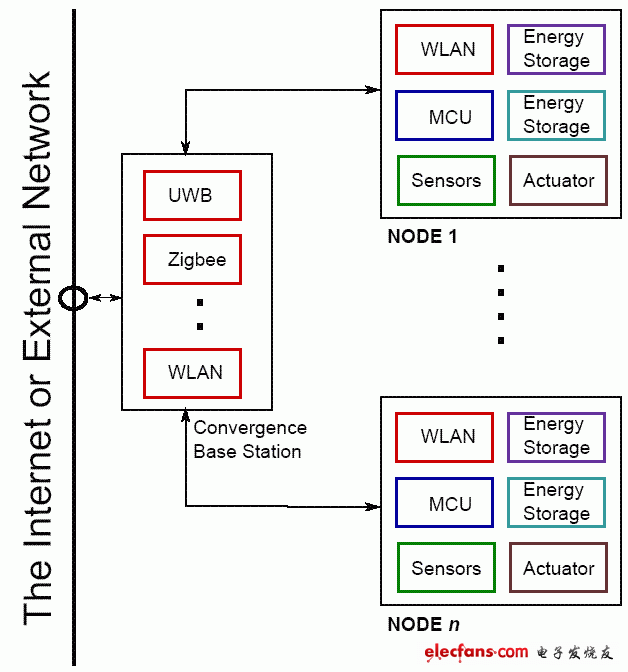If the systems around us can detect and respond to changes in their environment, this will undoubtedly completely change our lives. The wireless sensor network is such a system. Some distributed sensor implementations (nodes) in the system communicate with each other wirelessly and jointly respond to physical stimuli. This article outlines some of the latest developments in nodes and helps you understand system-level design methods.
Figure 1 shows an example network and the subsystem of each node. Based on the consideration of ease of deployment and lower installation cost, each node is required to be able to communicate wirelessly. In order to reduce the communication overhead and shorten the response time, we hope that the node can process the sensor data locally and can control the actuator. The daily maintenance of a large number of nodes (for example: battery replacement, etc.), the cost may be extremely high. The ideal situation is to rely on storage / collection of energy sensors to work continuously for several years.

Figure 1 The sensor node collects energy to supply power, independently judges its environmental changes, and can use multiple protocols to communicate
The choice of sensors, radios, and microcontroller (MCU) depends on the nature of the application. This article focuses on sensor networks in an office environment, and its applications include energy management, security, or resource planning.
Manual Lifting Column,Lifting Machine,Lift Mechanism,Linear Lifting Mechanism
Kunshan Zeitech Mechanical & Electrical Technology Co., Ltd , https://www.zeithe.com